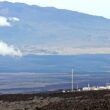Back to the basics regarding an Iran nuclear deal
April 3, 2015
In assessing the announcement of a framework agreement with Iran—which is not really an agreement but a joint statement, with an accompanying White House parameters fact sheet that the Iranians do not accept—it is important to keep in mind the overall context within which these negotiations are being carried out. Namely, there is still no indication that Iran has backed away from its military aspirations in the nuclear realm.
There are elements of the US document that look positive (reduction of stockpiles of low-enriched uranium and not enabling Iran to extract any plutonium from the Arak reactor), while other parts look quite negative (it does not deal with the PMD, or possible military dimensions, issue, and the EU-Iran statement says application of the International Atomic Energy Agency Additional Protocol will be “provisional”). In far too many cases, the language is vague and ambiguous, and we are left wondering about the precise meaning. Going into a discussion of all the elements creates a risk of getting bogged down in the details of an agreement (that is not even an agreement) in a manner that causes one to lose sight of the wider context of Iran’s motivations and intentions: namely, its military nuclear aspirations.
This wider context explains why Iran’s goal since the latest round of negotiations began in October 2013 has consistently been to achieve maximum sanctions relief from the international community, in return for minimal nuclear concessions that will enable it to maintain its breakout capability. It is why Iran was so adamant about ensuring research and development into more advanced generations of centrifuges in the context of the preliminary Joint Plan of Action, in order to offset its discontinuation of uranium enrichment to the 20 percent level. In this regard, Iran was clearly focused on the long-term implications for its breakout capability. It also explains why Iran is likely to be much more willing to mothball elements of its nuclear program, even in IAEA-monitored storage, in the context of a comprehensive deal, rather than close down and dismantle significant parts of its vast and growing nuclear infrastructure.
In looking to the most recent development in this long and drawn out negotiation with Iran—which has been proceeding in different formats since 2003—as well as what will continue to unfold over the coming months, we must assess whether Iran has not been more successful in achieving its goal of holding on to its breakout capability than the international negotiators have been in achieving their goal of ensuring that Iran cannot develop nuclear weapons. The P5+1 countries continue to base their policy on the hope of robust verification measures that will detect a violation and enable a swift and effective response. But they are not willing to predicate this on exposure and examination of how Iran has violated its NPT commitments in the past by its work on a nuclear weapons capability. Iran’s past behavior in the nuclear realm, coupled with its continued military nuclear aspirations and bullying behavior in the Middle East, do not warrant any celebration of an historic deal.
Emily B. Landau
senior research fellow and head of the Arms Control and Regional Security Program
Institute for National Security Studies in Tel Aviv













